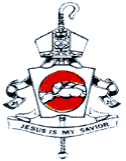The Catholic Bishops' Conference of the Philippines
The Official Website of
CBCP Online

On July 16, 1982 the first Diocesan Pastoral Plan (DPP I) was launched, covering a five-year period. It vision: "A community of faith living in love, according to the Gospel message, responding in service to the signs of the times, striving in hope for the coming of the Kingdom."
In its initial implementation, DPP I succeeded in transforming the old image of the hierarchical church into a community of the faithful which encourages collegiality and co-responsibility between the clergy and laity. As evangelization had become a focal point of concern, the diocese set up a radio station, DZGN-FM, and a diocesan newsletter, the Good News Sorsogon to help shapre the program of evangelization.
The diocese was about to launch its second Diocesan Pastoral Plan (DPP II) when twin super-typhoons devastated the province in 1987. Losses in lives and property needed immediate attention. DPP II was therefore placed on hold for two years. When finally launched in July 1989, the goal of DPP II was "to organize the local Church into a worshipping and serving community, present in small communities that give witness to a life of unity, justice, peace and love." The program focussed on the building of small communities as the parish setting had become too large to affect close interpersonal relationships.
Within the period covered by DPP II, the most memorable event that took place was the declaration of Bishop Varela of a "Year of Grace" that began May 1, 1991 to April 30, 1992. This was a call for renewal and conversion.
The "Year of Grace" was also Bishop Varela's act of thanksgiving for his 25 years in the episcopate, and his tribute to the Christian community of Sorsogon for having walked with him a pilgrimage to build a Church of the Poor.
On April 25, 1994, the Diocesan Pastoral Plan III was presented to the General Pastoral Assembly for ratification and approval. On July 8, 1994, the DPP III was formally launched and solemnly proclaimed at the Sts. Peter and Paul Cathedral in Sorsogon, Sorsogon.
The Diocese of Sorsogon was originally part of the Archdiocese of Nueva Caceres. When it was made a separate diocese on June 29, 1951, it included the territory of Masbate. When the Diocese of Nueva Caceres was elevated into an archdiocese in the same year, Legazpi and Sorsogon were made suffragan dioceses of Nueva Caceres. On March 23, 1968, Masbate was mde into a separate diocese. At present the Diocese of Sorsogon covers simply the civil province of Sorsogon. The population is 704,363 of which 87 per cent are Catholics.
Sorsogon Province is at the southeastern end of Luzon Island and is one of the provinces of the Bicol Region comprising Region V. The province shapes the end of the Bicol Peninsula, and except for its northern part which connects with the Province of Albay, it is completely surrounded by water: The Ticao and Burias Passes to the west, San Bernardino Strait to the south, the Philippine Sea and the Pacific Ocean to the east. Sorsogon hugs the Bay of Sorsogon in its mid-portion, its capital town sitting right on the edge of this bay.
Not much is known about the early exploration of the province, except that the portion of the region now called Sorsogon used to be called Ibalos during the early days of Spanish colonization. The island of Bagatao situated at the mouth of Sorsogon Bay, was also known to have been a shipbuilding center during the Manila-Acapulco galleon trade.
Sorsogon is a main sea link between Luzon and the Visayan islands, with boats and ferries crossing the San Bernardino Strait in passenger and trade traffic. Today the Philippine-Japan Friendship Highway maintains jump-off points in Sorsogon and Samar provinces, where land traffic to and from Mindanao, crossing Leyte and Samar through the San Juanico Strait, is ferried back and forth Samar and Sorsogon to proceed to the north of Luzon, or back to the south of Mindanao.
The First Bishop of Sorsogon was Bishop Arnulfo S. Arcilla. His term came at a time when the Second Vatican Council was being convened, whch brought progressive changes in the Church. It was also at this time that the clergy was calling for more relevant pastoral programs, and greater participation in the affairs of the diocese by the laity.
Transparency as a requisite for diocesan administration was strongly demanded. And when this met with adverse reaction, demoralization crept into the ranks of the clergy with some members actually walking out of their assignments. The situation led to the appointment of Bishop Concordio Sarte as Auxiliary Bishop of Sorsogon. This, however did not ease the situation and the diocese continued to be in crisis.
When Bishop Arcilla resigned, the Holy See designated Bishop Jesus Y. Varela, then Bishop of Ozamiz, as the Second Bishop of Sorsogon. Bishop Varela painstakingly laid down the groundwork for healing and reconciliation. Realizing the need for a systematic diocesan program, the bishop and the clergy opted for a planning system which made use of the Southeast Asia Interdisciplinary Development Institute (SAIDI) process.
|
Diocesan Curia |
|
Clergy |
|
Parishes |
|
Educational Center |
|
Institutions |
|
Statistics |

Diocese of Sorsogon

